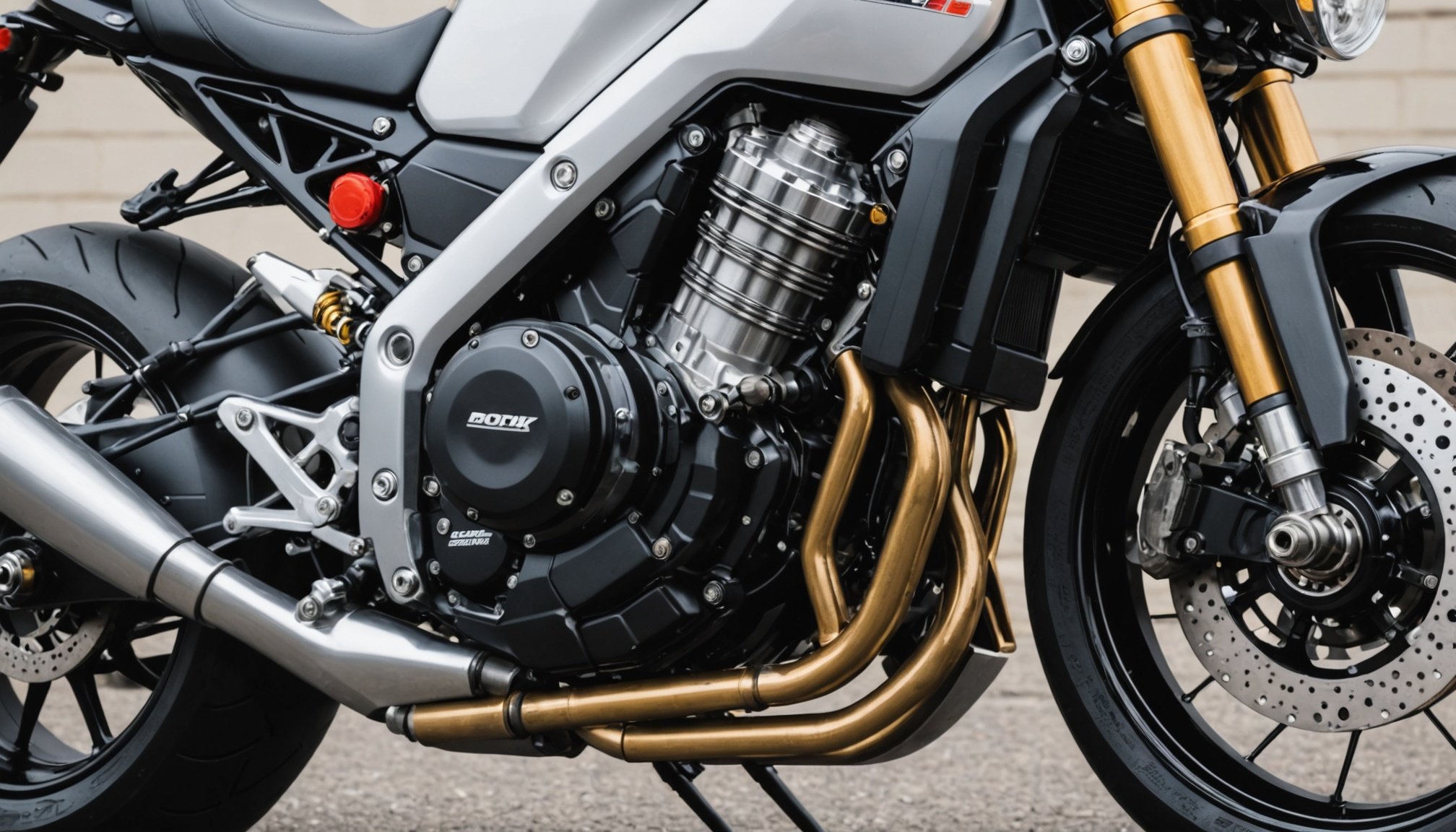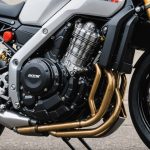Overview of Hydraulic Clutches
Hydraulic clutches offer a modern and efficient solution for enhancing the riding experience compared to traditional cable-operated systems. These clutches use a hydraulic system comprising a master cylinder and a slave cylinder to engage and disengage the clutch plates. This results in a smoother and more precise control of the clutch, offering significant benefits, especially for sports bikes.
For sports bike riders navigating UK traffic, upgrading to a hydraulic clutch can be particularly advantageous. This installation provides a consistent feel, reducing hand fatigue during long rides or in stop-and-go situations typical in urban environments. The smoother engagement aids in managing the quick manoeuvres often required in congested areas.
In parallel : The Definitive Manual for Installing a GPS Lap Timer on Your Sport Bike: Enhance Your Performance Tracking on UK Race Tracks
Models such as the Yamaha YZF-R1, Honda CBR, and Kawasaki Ninja are popular sports bikes that can greatly benefit from hydraulic clutch systems, especially when navigating the busy streets of UK cities. By adopting this technology, riders can experience improved performance and reliability, enhancing not only their comfort but also their safety. The shift to hydraulic clutches underscores a technical evolution in motorcycle rideability, offering an elevated riding experience that meets the demands of modern traffic conditions.
Tools and Materials Required
To achieve a successful hydraulic clutch installation, it’s crucial to gather all the necessary tools and materials. This preparation ensures a smooth process and reduces the likelihood of interruptions. Basic tools like adjustable wrenches, screwdrivers, and pliers form the essential toolkit for this task. Additionally, you will need specific items such as thread seal tape and a torque wrench to ensure joints are secure.
Additional reading : Master Tank Grip Techniques: Enhance Your Sport Bike Handling Skills in the UK
As for materials, the installation requires a high-quality hydraulic clutch kit suitable for your specific bike model. This kit typically includes components like the master cylinder, slave cylinder, and hydraulic lines. It’s recommended to use a fresh bottle of DOT 4 brake fluid, which is commonly used as hydraulic fluid, and connectors compatible with your bike.
Purchasing these tools and materials from reputable sources, such as well-established auto parts shops or trusted online platforms, guarantees quality and reliability. Authentic suppliers are more likely to offer products that meet safety standards, an essential consideration given the demanding nature of sports bike performance. Investing in quality tools not only simplifies the installation but also contributes to long-term maintenance success.
Step-by-Step Installation Process
Successfully performing a hydraulic clutch installation involves following a structured process to ensure safety and efficacy.
Preparation
Before starting the installation, prepare your workspace thoroughly. Ensure the motorcycle is stable, perhaps using a sturdy stand, and remember to wear safety gear. Begin by draining any existing clutch fluid, as old fluid can compromise the system’s performance. Gather your tools, including adjustable wrenches and screwdrivers, and keep the installation manual close for bike-specific instructions.
Installing the Hydraulic Components
Start by installing the hydraulic master cylinder on your bike’s handlebar, ensuring it is mounted securely and correctly aligned. Next, connect the hydraulic line to the slave cylinder, taking care to route it properly without any kinks. Tie the line securely along the frame to prevent movement during operation. Make sure all components are aligned and securely fastened, as a loose setup can lead to performance issues later.
Fluid Filling and Bleeding the System
Fill the newly installed system with high-quality hydraulic fluid, typically DOT 4 brake fluid. Once filled, proceed to bleed the system by continuously opening the bleeder valve until no air bubbles are expelled. This step is crucial for ensuring reliable clutch engagement. Double-check connections for leaks and ensure the fluid levels are maintained appropriately.
Troubleshooting and Common Issues
Hydraulic clutch troubleshooting can be essential to ensure optimal performance. A frequent issue during installation is poor clutch engagement. This can arise from improper alignment or incorrect fluid levels. Ensure all components are properly secured and that fluid levels are maintained to rectify this problem.
Another common problem is hydraulic leaks, often caused by loose connections or damaged seals. Check all junctions and replace defective seals promptly to maintain system integrity. Regular inspection of the hydraulic lines for wear and tear is advisable to prevent this issue in the future.
Air bubbles in the hydraulic system can severely affect clutch performance. A precision approach is the best answer to, “How do you fix air bubbles in the system?” Carefully bleed the system by opening the bleeder valve and continuing until no bubbles remain visible. This process ensures complete hydraulic line integrity and reliable clutch operation.
By focusing on these common issues, riders can enhance the reliability of their hydraulic clutch systems. Regular maintenance and thoughtful inspection can prevent these problems from negatively impacting sports bike performance, ensuring a smoother and more efficient ride in the bustling environments of UK cities.
Maintenance Tips for Hydraulic Clutches
Proper maintenance of hydraulic clutches is essential for enhancing sports bike performance and longevity. Consistent care ensures a smooth riding experience, particularly crucial given the demands of UK traffic. Regularly check hydraulic fluid levels; insufficient or old fluid can lead to diminished clutch functionality. Replace fluid according to manufacturer recommendations to prevent wear and tear on internal components.
Monitor for signs of wear, such as unusual resistance or slipping during gear shifts. These symptoms often indicate a need for system evaluation or possible repair. Catching these early can prevent more severe issues and costly repairs. Additionally, inspect hydraulic lines for any signs of leakage or damage. Secure connections and replace worn seals can maintain system integrity.
Incorporate routine checks into your sports bike care regimen. Keeping a log of maintenance activities can highlight patterns and timing for future needs. Ensure all maintenance actions comply with manufacturer specifications, safeguarding both bike performance and rider safety. By staying proactive with these practices, riders can maximise the benefits of their hydraulic clutch systems and enjoy a safer, more responsive ride.
Performance Benefits in UK Traffic
Upgrading to a hydraulic clutch on sports bikes offers substantial benefits, particularly for those navigating the complexities of UK traffic. The main advantage is the enhanced control and comfort provided by the smooth, precise engagement of the clutch system. This improvement is especially evident during stop-and-go traffic, where smoother transitions can minimize stress and reduce hand fatigue for the rider.
Sports bike riders often encounter unpredictable manoeuvres. A hydraulic clutch’s responsiveness can significantly improve safety and performance, providing a consistent and reliable feel. This is crucial for managing the fast-paced urban environment, where quick decision-making and agility are often necessary.
Hydraulic clutches not only enhance the riding comfort but also contribute to a more enjoyable, dynamic riding experience. Riders of popular models like Yamaha YZF-R1 and Kawasaki Ninja can experience an elevated level of bike handling, facilitating superior adaptability in city driving conditions.
Compliance with UK traffic laws becomes easier with such an upgrade, as a hydraulic clutch meets modern standards. By addressing both performance and legal aspects, hydraulic clutches can prove to be a worthwhile investment for riders seeking to improve their daily commute efficiently.
Understanding UK Traffic Laws on Bike Modifications
Navigating the complexities of UK traffic laws is essential for sports bike riders looking to modify their motorcycles, including upgrading clutch systems. Ensuring that a hydraulic clutch installation complies with legal standards is crucial to avoid potential penalties.
The first point of reference for understanding these laws is the Driver and Vehicle Licensing Agency (DVLA), which offers guidance on acceptable modifications. It’s vital for riders to consult updated regulations and maintain documentation of any modifications.
Motorcycle modifications must adhere to guidelines to ensure both safety and compliance. Modifications impacting the bike’s structure or control mechanisms, such as clutch upgrades, need to meet specific safety standards. Verify that any component added is type-approved and does not compromise the vehicle’s integrity.
Riders can explore resources provided by organizations like the Motorcycle Industry Association (MCIA) for further insights. Legal advisory services can assist in determining the legality of modifications and facilitate in understanding the required compliance checks.
Online forums and communities also serve as valuable platforms for sharing experiences and clarifying uncertainties. These networks can offer practical advice and firsthand accounts regarding motorcycle modifications in the UK’s regulatory environment.
Additional Resources and Further Reading
For those keen on perfecting their hydraulic clutch installation, a wealth of resources is available to support your learning journey. Trusted manuals specific to your sports bike model can provide step-by-step guidance, ensuring each installation detail aligns with manufacturers’ specifications. These documents often highlight nuances for different bike models, crucial for avoiding common pitfalls during DIY installations.
Online platforms, including respected forums and communities, serve as invaluable resources where sports bike enthusiasts share insights and advice. These communities are buzzing with practical tips from seasoned riders who have navigated similar challenges, offering real-world solutions to your troubleshooting questions.
For those who prefer a more visual learning approach, an array of tutorial videos exists to walk you through the intricacies of hydraulic clutch installations. These videos offer a comprehensive view of the process, from preparing your workspace to the final system checks, providing a richer understanding of the task at hand.
Lastly, engaging with professional workshops or webinars delving into sports bike maintenance can elevate your skills. These events often cover a broad spectrum of topics, from hydraulic clutch systems to overall bike care, enhancing both your theoretical and practical knowledge.










